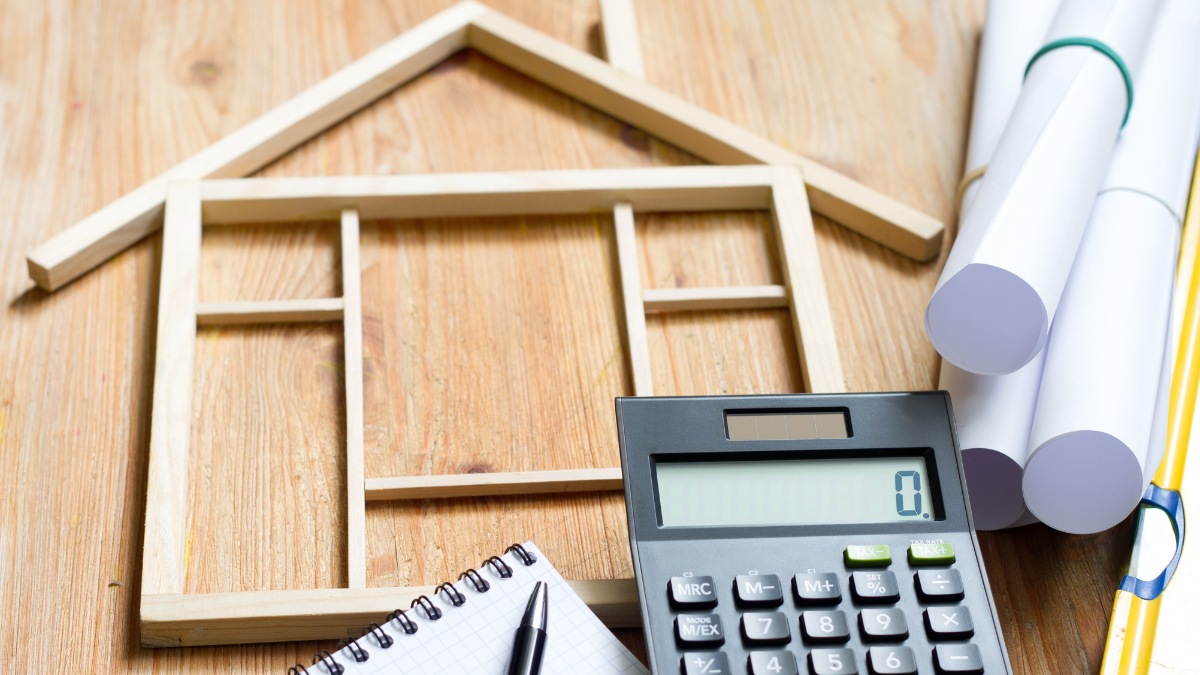Is It Better to Remodel or Move?
Deciding whether to remodel or move can be tricky, as you most consider several factors. Aspects such as the school district, real estate market, emotional attachment to the current house, and financial considerations like equity loans and mortgage rates all come into play. Factors like square footage, closing costs, and hidden costs can significantly impact the decision-making process. In this article, we will explore the pros and cons of remodeling versus moving and discuss the factors that you should consider when making this critical decision. By analyzing the real estate market, current housing situation, financial implications, and personal preferences, individuals can better understand whether remodeling or moving is the best choice for them. So, let’s dive in and explore the critical elements of this decision-making process.
Factors to Consider While Making Your Decision
Deciding whether to remodel or move can be a difficult decision for homeowners to make. There are several factors to consider when weighing the options.
One key factor is the current real estate market. Understanding the trends and conditions of the market is vital for homeowners considering selling their current house. This information can help them determine the potential sale price and whether they will have a positive return on investment.
Another important consideration is the emotional attachment to the current house. Many homeowners have a strong sense of attachment to their homes. From the memories made within their walls to the importance of community in the neighborhood. Evaluating the emotional value of staying versus the desire for a new living space is crucial.
Financial implications are another major factor to consider. Remodeling projects can be costly, with upfront and additional costs such as labor and unexpected expenses. On the other hand, moving can incur expenses like agent commissions, closing costs, and potentially higher mortgage rates. Homeowners should consider their current mortgage situation and evaluate whether an equity loan or personal loan may be necessary.
Lastly, desired living space is a significant consideration. If the current space no longer meets the homeowner’s needs or the neighborhood has changed. It may be time to explore other options. Assessing the necessary square footage, renovation plans, and architectural designs can help determine whether a remodel or move is the best choice.
Ultimately, the decision to remodel or move depends on several factors. By carefully evaluating the current real estate market, emotional attachment, financial sense, desired living space, and average costs, homeowners can decide what is best for their current situation and future goals.
In This Article
- Is It Better to Remodel or Move?
- Real Estate Market
- Emotional Attachment & Financial Sense
- Floor Plans & Square Footage
Real Estate Market
The real estate market is a crucial factor to consider when deciding whether to remodel or move. Understanding the current trends and conditions of the market is essential for homeowners looking to sell their current house. By analyzing the market, homeowners can determine the potential sale price of their property and whether they will have a positive return on investment. Factors such as housing demand, property taxes, average costs, and hidden expenses can influence decision-making. Additionally, homeowners should consider the housing market’s current state in their desired area if they are considering a move. By studying market conditions, homeowners can make informed decisions and maximize their financial gains regarding remodeling or moving. Ultimately, being aware of the real estate market is crucial for homeowners to make the best choice for their current and future living situations.
Current Housing Market
The current housing market is a major factor when deciding whether to remodel or move. It is vital to assess recent comps and evaluate the marketability of your home before making a decision. Consulting with a real estate agent can provide valuable insights into the current housing market and help you make an informed choice.
Suppose recent comps indicate a strong real estate market with increasing home values. In that case, it may be an excellent time to consider selling. However, if the market is less favorable and home prices are stagnant, a remodel might be a better option to increase the value of your property and make it more attractive to potential buyers.
The decision to remodel or move also has financial implications. Selling a home comes with closing costs and real estate agent commissions. At the same time, remodeling incurs upfront costs, labor costs, and possibly unexpected additional costs. You should weigh the potential return on investment from a remodel against the potential equity gained from selling your current home.
Considering the current housing market, recent comps, and seeking advice from a real estate agent will help you make a well-informed decision that aligns with your financial goals. It is crucial to carefully evaluate these factors to ensure you make the right choice for your specific situation and maximize your investment opportunities.
Average Cost of Remodeling and Moving
When deciding whether to remodel or move, one important consideration is the average cost of each option. On average, a full remodel can cost around $100,000, depending on the extent of the renovations and the materials used. This investment can significantly transform your current space and increase its value in the real estate market.
A single-room remodel can cost around $10,000 if you want to make more minor changes. For example, kitchen remodeling can cost approximately $9,500, while bathroom remodeling costs roughly $4,800. If you’re thinking of adding a room to your home, be prepared to spend about $13,300 on average for this improvement project.
On the other hand, if you’re considering moving to a new house, hiring movers to pack and transport a three-bedroom house across town can cost around $3,000 on average. This cost may vary depending on the distance, size of the home, and additional services required.
It’s essential to consider the advantages and disadvantages of both options. While a remodel allows you to customize and update your current space according to your preferences, moving to a new home offers a fresh start in a different location.
Ultimately, your decision should be based on your budget, goals, and personal circumstances. If you’re unsure, consulting with a real estate agent or a remodeling contractor can provide valuable insights to help you make an informed choice.
Return on Investment for Moving and Remodeling
Return on Investment (ROI) is crucial when deciding between moving or remodeling your home. The ROI for both options depends on the cost of the project and the potential resale value.
To calculate the ROI, the 2024 Cost vs. Value Report provides valuable data on the most worthwhile renovations. This report compares the average cost of a renovation with its potential resale value. It considers factors such as the region, type of renovation, and how it compares to other homes in the neighborhood.
Remodeling projects can offer a wide range of ROI. According to the report, some renovations can recoup as much as 90% of the investment, while others may only recoup around 50%. It’s essential to analyze the renovation project and its potential resale value carefully.
On the other hand, when it comes to moving, the ROI is linked to the potential increase in the resale value of the new property. Factors such as the location, size of the home, and the current real estate market can significantly impact the ROI.
Ultimately, calculating the ROI for both moving and remodeling requires careful consideration of the specific factors involved, such as the potential resale value, costs, and market conditions. Consulting a real estate professional can provide valuable insights into maximizing your investment.
Emotional Attachment & Financial Sense
Emotional Attachment: One significant factor homeowners often consider when deciding between remodeling or moving is their emotional attachment to their current house. Many people have fond memories, sentimental value, and a sense of familiarity with their home, making it challenging to let go. The decision to remodel or move can be emotional. Homeowners weigh the potential of creating new memories in a renovated space versus the attachment to their current home.
Financial Sense: Making a financial decision regarding remodeling or moving is crucial. Homeowners need to consider various financial aspects to determine what makes the most financial sense for their situation. Factors such as the current real estate market, equity in their current house, mortgage rates, closing costs, and potential resale value all come into play. Remodeling projects can be an investment, and analyzing the return on investment (ROI) is crucial. On the other hand, moving to a new property involves considering the purchase price, mortgage situation, property taxes, and potential appreciation of the new property. It’s essential to weigh both options’ upfront and hidden costs and make a decision that aligns with one’s financial goals and circumstances.
Equity Loan Concerning Moving and Remodeling Costs
When homeowners consider the prospect of moving or remodeling, one major factor that often comes into play is the cost. Whether it’s the expenses of moving to a new home or the renovations needed to transform the current space, financing options become crucial. This is where equity loans can be a valuable solution.
An equity loan allows homeowners to borrow against the equity they have built up in their property. With an equity loan, the homeowner can tap into the value of their home to finance moving costs or remodeling projects. This type of loan typically offers lower interest rates than other financing options, making it an attractive choice.
By using an equity loan for moving or remodeling, homeowners can obtain the necessary funds upfront and easily manage the costs associated with their projects. The loan amount is based on the homeowner’s equity, which is determined by the current market value of their home minus any outstanding mortgage. This allows homeowners to leverage the equity they have built up over time to finance their venture.
However, homeowners need to assess their financial situation and consider the risks of an equity loan. They should evaluate the loan terms, including interest rates, repayment period, and associated fees. Additionally, homeowners should consider the potential impact on their property’s value and overall financial well-being.
An equity loan for moving or remodeling can be a wise financial decision for homeowners. It provides the necessary funds to cover upfront costs, ensuring a smoother transition or renovation process. By understanding the benefits and considerations of an equity loan, homeowners can make informed decisions and turn their remodeling or moving dreams into reality.
Unexpected Costs Involved in Moving and Remodeling Projects
When it comes to moving or remodeling, homeowners need to be prepared for unexpected costs that can arise throughout the process. These costs can vary depending on the size and extent of the project, the location, and individual circumstances.
One typical unexpected cost in moving and remodeling projects is permits and inspections. Depending on where you live, you may need permits for particular renovations or upgrades. These permits can come with fees you may not have initially factored into your budget. Additionally, some projects may require inspections throughout the process, which may come with associated costs.
For those who are remodeling, short-term rentals or meals out during the construction phase can be unexpected costs. Depending on the extent of the renovation, you may need to relocate during the construction period temporarily. This can include the cost of renting short-term accommodation and eating out more frequently, which can add up over time.
Another potential unexpected cost of moving and remodeling is the opportunity to make energy-efficient upgrades. While these upgrades may save you money in the long run, they can require an upfront investment. This could include purchasing energy-efficient appliances, installing solar panels, or upgrading insulation.
In summary, unexpected costs can be involved in moving and remodeling projects. Homeowners should budget for permits and inspections, be prepared for the potential need for short-term accommodations and meals, and consider the opportunity to make energy-efficient upgrades. Planning for these unexpected costs allows homeowners to navigate their projects more smoothly.
Hidden Costs Associated with Moving and Remodeling
When considering whether to move to a new home or embark on a remodeling project, it’s essential to be aware of the potential hidden costs that can add up significantly. Often overlooked expenses can strain your budget if not adequately accounted for.
One typical hidden cost in both moving and remodeling is storage fees. Suppose you are downsizing or need to store your belongings during renovations temporarily. In that case, you may have to pay for a storage unit. These fees can vary depending on the size and duration of storage needed.
Another hidden cost associated with moving is utility transfer fees. When moving to a new home, you may be required to transfer utilities such as electricity, gas, and water. These transfer fees can quickly accumulate and impact your moving expenses.
When moving to a new home, unexpected repairs can also become a hidden cost. Even with a thorough home inspection, hidden issues may only become apparent after moving in. Repairing these unforeseen problems can be an unexpected financial burden.
In remodeling projects, unforeseen structural issues or code compliance may arise, resulting in additional expenses. These unexpected costs can range from repairing hidden plumbing or electrical problems to bringing the property up to the latest building codes.
When considering moving or remodeling, it’s vital to consider these hidden costs and the more obvious expenses. Knowing potential storage fees, utility transfer fees, and unexpected repairs can help you make a more informed decision and budget accordingly.
Upfront Cost of Moving vs. Remodeling Project
When it comes to either moving to a new home or undertaking a remodeling project, it’s essential to consider the upfront costs involved. Moving requires various expenses, such as hiring movers, purchasing packing materials, renting a truck, and potentially leasing a storage unit. These costs can quickly add up and should be factored into your budget.
Hiring professional movers is a significant upfront cost in the moving process. The cost will depend on factors such as the distance of the move, the size of your home, and whether you require additional services like packing assistance. Additionally, purchasing packing materials, such as boxes, tape, and bubble wrap, is an expense that should be considered.
In some cases, renting a moving truck may be necessary, especially for long-distance moves. The rental cost will vary based on the truck size and the rental duration. Also, leasing a storage unit will incur additional upfront charges if you need temporary storage during moving.
On the other hand, a remodeling project also comes with its own set of upfront expenses. While the costs will vary depending on the project’s scope, hiring professional remodeling services is a significant expense. These professionals can help bring your renovation plans to life but should be factored into your initial budget.
In conclusion, moving and remodeling projects have upfront costs that must be considered. Whether hiring movers, purchasing packing materials, renting a truck, or hiring remodeling services, these expenses should be carefully planned to ensure a smooth and financially sound process.
Additional Costs Involved in Renovating a Home vs. Buying a New Home
When deciding between renovating a home or buying a new one, it’s essential to consider the additional costs involved in each option. While purchasing a new home may seem like a fresh start, it comes with its own expenses. On the other hand, renovating a house allows you to tailor it to your specific needs and preferences. Still, there are also financial considerations to keep in mind.
One of the fundamental expenses in a renovation project is obtaining the necessary permits and inspections. Depending on the extent of the renovation, you may need to apply for permits from local authorities, which can incur fees. Inspections throughout the project ensure that the work is carried out correctly, but also come with a cost.
Additionally, suppose you decide to live in temporary accommodation during the renovation. In that case, you’ll need to factor in the cost of a short-term rental or hotel stay. This can significantly increase your expenses, especially if it lasts for an extended period.
Another expense that may arise during a renovation project is making energy-efficient upgrades. While these upgrades can save you money in the long run by reducing energy consumption, they require an upfront investment.
It’s essential to consider the duration of the renovation project as well. Depending on the scope of the work, the project could last for weeks or even months. You may need to spend additional money on meals or alternative living arrangements.
Lastly, when engaging professionals for your renovation project, it’s crucial to have a clear contract outlining the scope of work, costs, and timelines. This will help avoid any disputes or unexpected costs down the line.
In conclusion, renovating a home can be a rewarding experience. Still, it’s essential to be aware of the additional costs involved. These expenses should be factored into your budgeting and decision-making process, from permits and inspections to temporary accommodation and energy-efficient upgrades.
Floor Plans & Square Footage
Regarding remodeling or moving, one vital factor is your current space’s floor plans and square footage and potential new home. Floor plans determine the layout and flow of your living areas, and square footage influences the size and functionality of each room. Evaluating your current floor plans and square footage can help you identify any limitations or areas for improvement that may be addressed through a renovation project. Similarly, when looking at new homes, analyzing the floor plans and square footage can help determine if the space meets your needs and preferences. Whether you’re considering a renovation or a move, carefully assessing the floor plans and square footage is essential for creating a comfortable and functional living environment for you and your family.
Evaluation of Floor Plans for Current House and Potential New Houses
When considering a remodel or move, one of the crucial aspects to evaluate is the floor plans of both your current house and potential new houses. The floor plan plays a significant role in determining your living space’s layout, functionality, and flexibility.
Start by evaluating the floor plan of your current house. Examine the flow of rooms and how they fit into your daily life. Consider whether the layout meets your needs and allows easy movement between spaces. Assess the functionality of each room and how well it serves its purpose. Consider whether the current floor plan provides flexibility in adapting to your changing lifestyle.
When assessing potential new houses, carefully compare their floor plans with your current one. Look for layouts that align with your preferences and address any shortcomings in your current space. Consider if the new floor plan offers a better flow between rooms and ensures functionality and flexibility for your family’s needs.
Another essential factor to consider is the necessary square footage requirements. Determine the ideal living space you need for comfortable living and storage. Depending on the number of members and specific requirements, this will vary for each individual or family.
Evaluating the floor plans of both your current house and potential new houses is crucial in making an informed decision about remodeling or moving. It helps you envision how the living space’s layout, functionality, and flexibility will meet your needs. By thoroughly assessing these aspects, you can ensure a smooth transition to a space that suits your lifestyle and preferences.
Square Footage Necessary for Desired Living Space: Remodel or Move
Determining the necessary square footage for your desired living space is crucial when evaluating whether to remodel your current home or move to a new one. Square footage plays a significant role in the functionality and comfort of your living environment.
Consider the number of bedrooms, family rooms, home office, and storage space to assess your current space. Evaluate if your existing square footage adequately meets your needs in each area. Determine if you require additional bedrooms for a growing family or a dedicated home office for remote work.
When determining your specific requirements for each area, consider the activities that will occur there. For example, if you enjoy hosting gatherings, you may need a larger living room or dining area. If you have a hobby that requires a dedicated space, such as a music room or workshop, Factor that into your square footage calculations.
Additionally, think about storage space needs. Consider if your home provides enough storage for seasonal items or sports equipment. Assess if you’ll require additional closet space, a larger garage, or a basement for storage.
By accurately assessing your specific requirements for each area of your home and determining the necessary square footage, you can decide whether a remodel or move is the best choice to achieve your desired living space.




